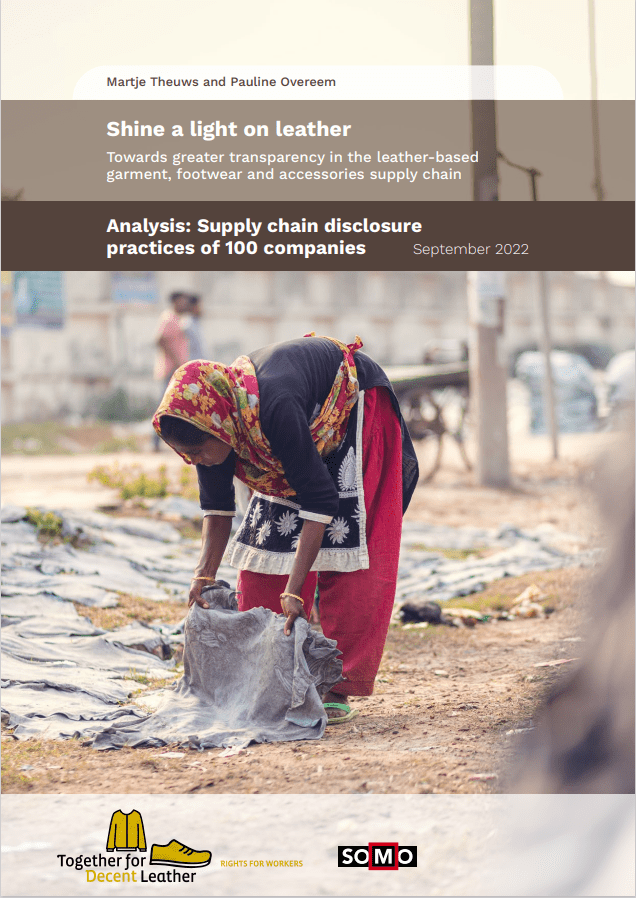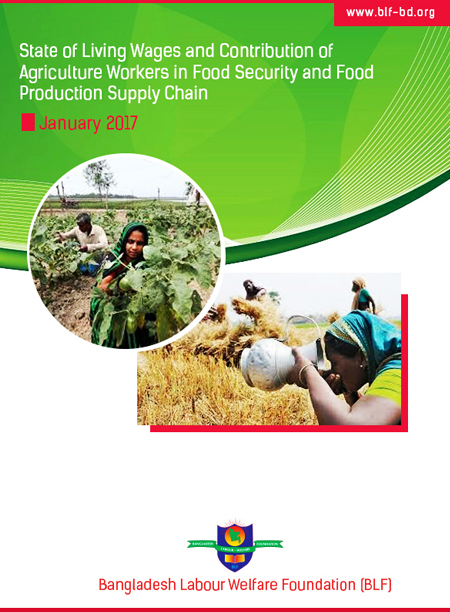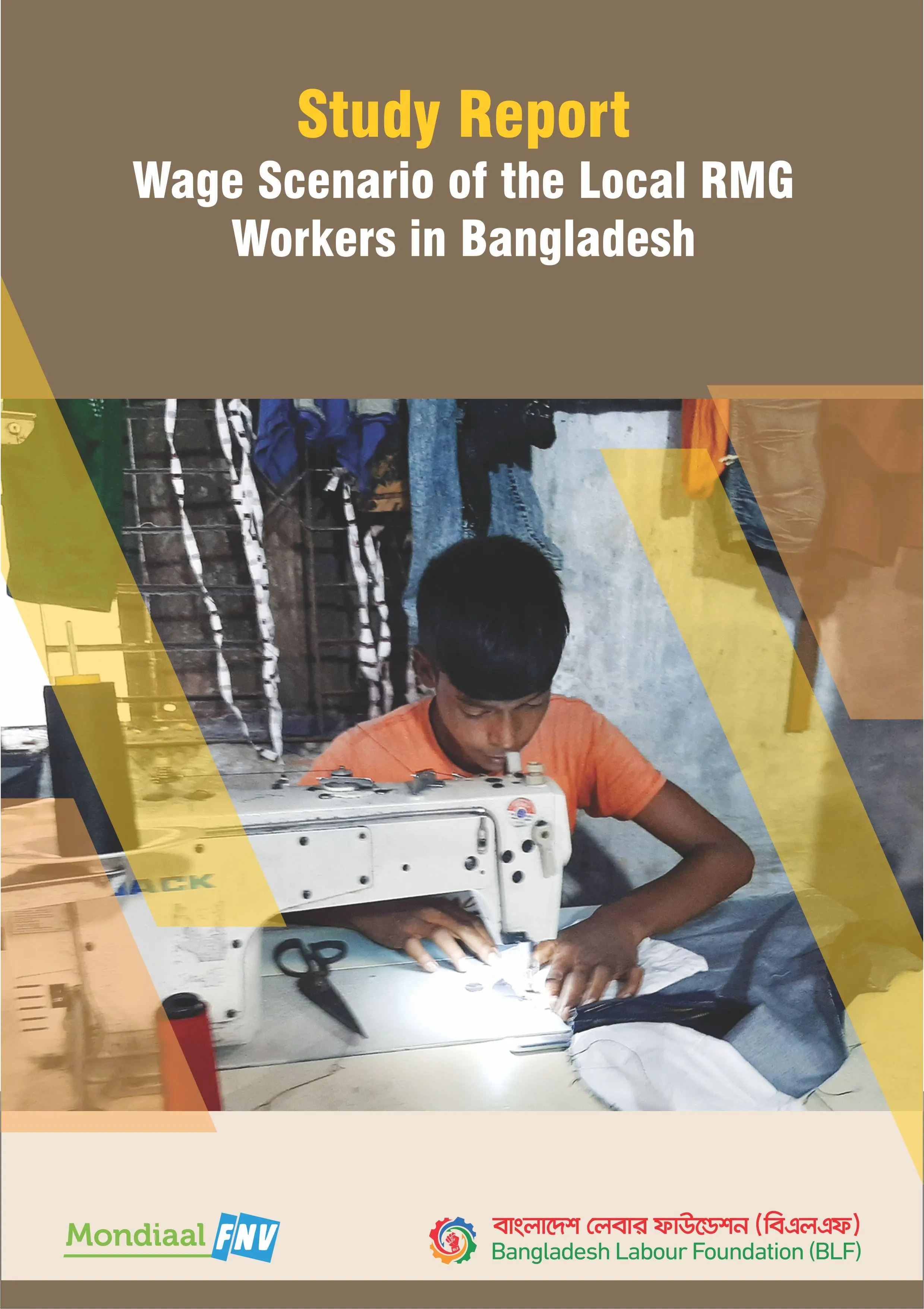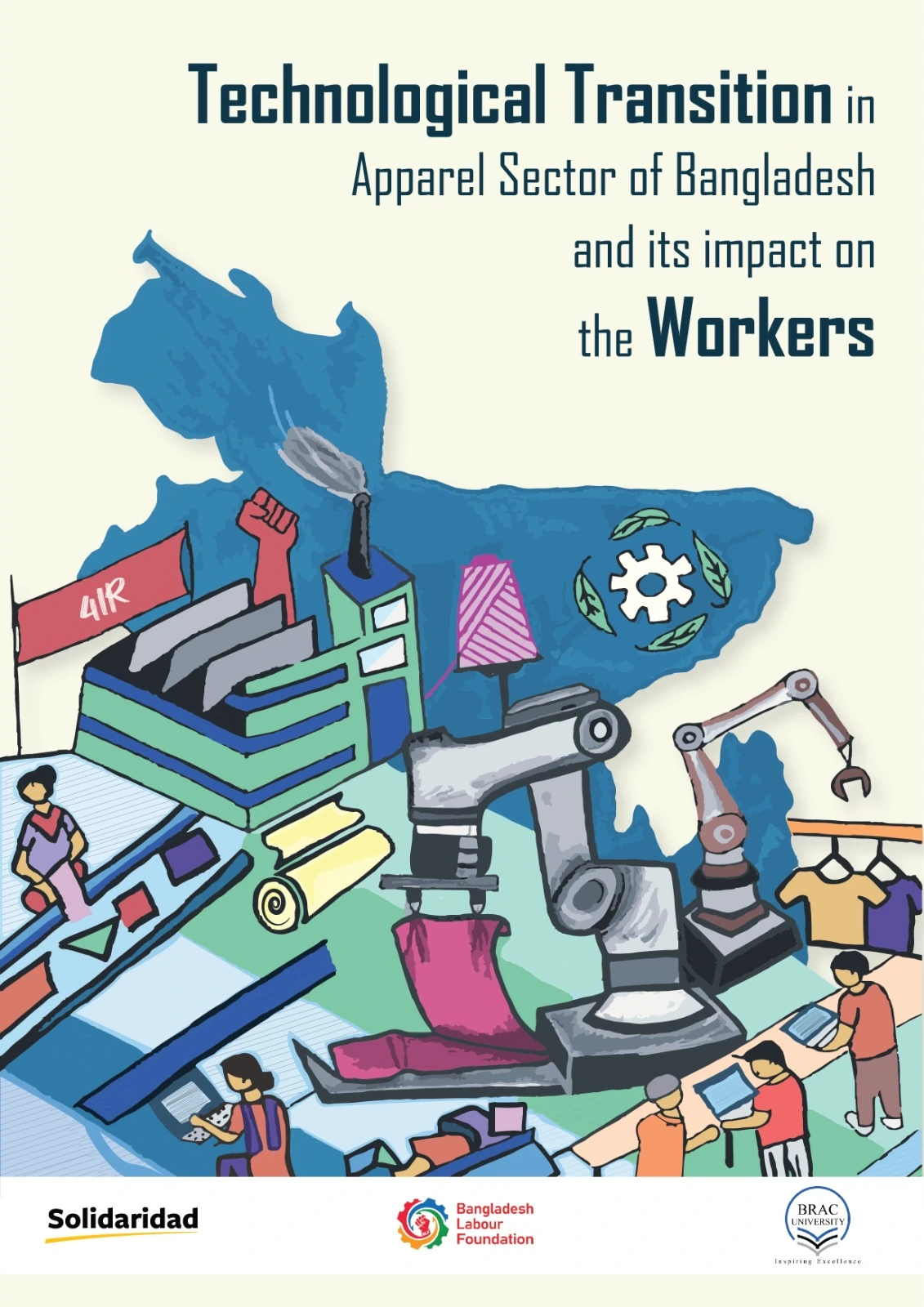This paper analyses the current state of supply chain transparency in the leather-based apparel, footwear, and accessories industry. For this paper report SOMO has investigated the level of supply chain transparency of 100 international buyers: brands, retailers, online retailers (“e-tailers”), and fashion conglomerates that sell leather jackets, trousers, shoes, belts, gloves, bags, and so on. Together with this paper, we are publishing a discussion paper where we make the case for enhanced supply chain transparency in the leather-based garment, footwear, and accessories sector.
Research & Study
Towards greater transparency in the leather-based garment, footwear and accessories supply chain Analysis: Supply chain disclosure practices of 100 companies
September, 2022
This paper analyses the current state of supply chain transparency in the leather-based apparel, footwear, and accessories industry. For this paper report SOMO has investigated the level of supply chain transparency of 100 international buyers: brands, retailers, online retailers (“e-tailers”), and fashion conglomerates that sell leather jackets, trousers, shoes, belts, gloves, bags, and so on. Together with this paper, we are publishing a discussion paper where we make the case for enhanced supply chain transparency in the leather-based garment, footwear, and accessories sector.
Background
The global leather garment, footwear, and accessories industry is notoriously associated with human rights and labour rights violations as well as environmental damage in the different production stages. Workers often toil for long hours and low wages in deplorable conditions. Union-busting, gender and caste discrimination, and child labour occur regularly. Workers struggle with health issues because they work with toxic substances and unsafe heavy machinery, often without adequate protective equipment. Environmental damage includes groundwater pollution through the discharge of untreated wastewater. There is an urgent need for greater supply chain transparency in the sector. Workers, trade unions, and workers’ support organizations need to know which corporate actors have a responsibility to address labour rights violations.
Objectives
- To evaluate the current level of supply chain transparency among 100 companies in the leather-based garment, footwear, and accessories industry.
- To identify specific supply chain information is currently being disclosed by these companies.
Key Findings
- Less than one-third (29 out of 100) of the buyers we looked at publish a supplier list.
- Of this group of 29 companies, 12 of their supplier lists contain information only about first-tier suppliers or end-product manufacturers.
- Beyond the first-tier suppliers, public information is very limited. We conclude that the level of public supply chain transparency provided by the majority of the 100 selected companies is very low.
- The responsible business initiatives, MSIs, and certification schemes we looked at offer weak guidance to their members when it comes to supply chain transparency. Most initiatives leave it to their members to decide whether to publish supplier information. Only the US-based Fair Labor Association (FLA) goes further, stating that its corporate members must make public their first-tier supplier list by March 2022.
Recommendations
- Trace and publicly disclose your full extended supply chain. This means all supplier facilities at all tiers, covering all processing and all inputs, including raw materials.
- Set concrete and timebound milestones towards such full disclosure and publicly account for your progress.
- Require corporate members to trace all links of their extended supply chains beyond end product suppliers and to publicly disclose disaggregated and detailed supply chain data.
- Publicly disclose the full supply chain data of your corporate members.
- Develop, adopt, and implement national, European Union, and/or other regional and international-level legislation requiring comprehensive corporate supply chain disclosure. Such legislation could be part of overarching mandatory human rights due diligence laws or stand-alone legislation.
The leather-based garment, footwear, and accessories supply chain is highly complex, involving a great variety of producers, buyers, and intermediaries. The industry has a high level of outsourcing and subcontracting, including large numbers of informal homeworkers. This makes it very difficult to establish links between workplaces at various stages of the supply chain and the companies that sell end-products such as leather jackets, shoes, and bags. Poverty pay, hazardous working conditions, and union busting are rife in the industry. Actors along the supply chain – workers, trade unions, NGOs, companies, investors, etc. – therefore urgently need access to supply chain information through greater transparency to push for improvements in workers’ rights and to obtain redress for rights are violations.

Publication Details
Date: September, 2022
Contact
Bangladesh Labour Foundation (BLF)
107 Bir Uttam C.R. Datta Road
Dhaka – 1205
Bangladesh






